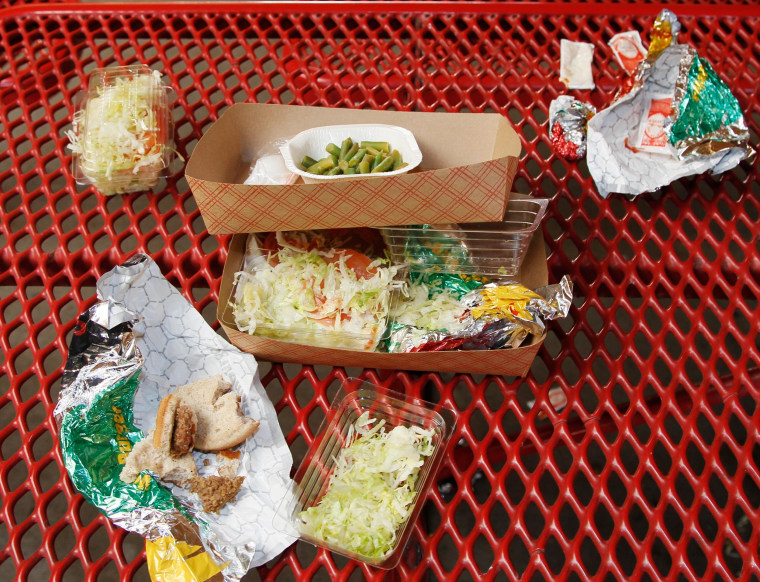A bipartisan Senate agreement would revise healthier meal standards put into place over the last few years to give schools more flexibility in what they serve the nation's schoolchildren, easing requirements on whole grains and delaying an upcoming deadline to cut sodium levels on the lunch line.
While legislation released by the Senate Agriculture Committee on Monday would placate some schools that have complained the rules are burdensome, it is greatly scaled back from an unsuccessful 2014 House Republican effort to allow some schools to opt out of the rules entirely. The panel is scheduled to vote on the measure on Wednesday.
After more than two years of public quarreling, the bill signals a possible truce for a group of school nutrition directors and first lady Michelle Obama, an outspoken proponent of healthier eating during her husband's seven years in office.
Related: School Lunches Are Getting More Healthful
The five-year Senate legislation would direct the Agriculture Department to revise the whole grain and sodium standards within 90 days of the bill's enactment, meaning the new standards could be in place by next school year if Congress acts quickly.
Under the agreement between those negotiating the bill, the new rules would scale back the whole grain standards to require that 80 percent of grains on the lunch line must be whole grain rich, or more than half whole grain. Currently, all grains are required to be whole grain rich, though some schools are now allowed to get waivers from that requirement.
Schools have said the whole grain rules were too tough in some cases, as whole grain pasta is harder to cook and some kids don't like it as much. Southern schools have had problems finding tasty whole grain biscuits and grits; schools in the Southwest say their students reject whole grain tortillas.
The agreement would also delay stricter standards on sodium that are scheduled for the 2017 school year. They would now be delayed two years, and a study would measure the benefits of those reductions.
The legislation would also require the government to figure out how to reduce waste of fruits and vegetables, which children are now required to take on the lunch line. Some just throw them away.
The bill requires the Agriculture Department and Centers for Disease Control and Prevention to come up with solutions like sharing tables where children can leave food they don't want. Some local health authorities have discouraged that approach.
Related: Students Toss Fruits, Veggies in School Lunches
The legislation would also put more resources into summer feeding programs and attempt to expand the ways in which those foods are served.
The rules phased in since 2012 set fat, calorie, sugar and sodium limits on foods in the lunch line and beyond. Schools have long been required to follow government nutrition rules if they accept federal reimbursements for free and reduced-price meals for low-income students, but the new standards are stricter.
The School Nutrition Association, which represents school nutrition directors and companies that sell food to schools, said it is supportive of the agreement negotiated by Senate Agriculture Chairman Pat Roberts, R-Kan., and the committee's top Democrat, Sen. Debbie Stabenow of Michigan.
"In the absence of increased funding, this agreement eases operational challenges and provides school meal programs critical flexibility to help them plan healthy school meals that appeal to students," the association's president, Jean Ronnei, said.
